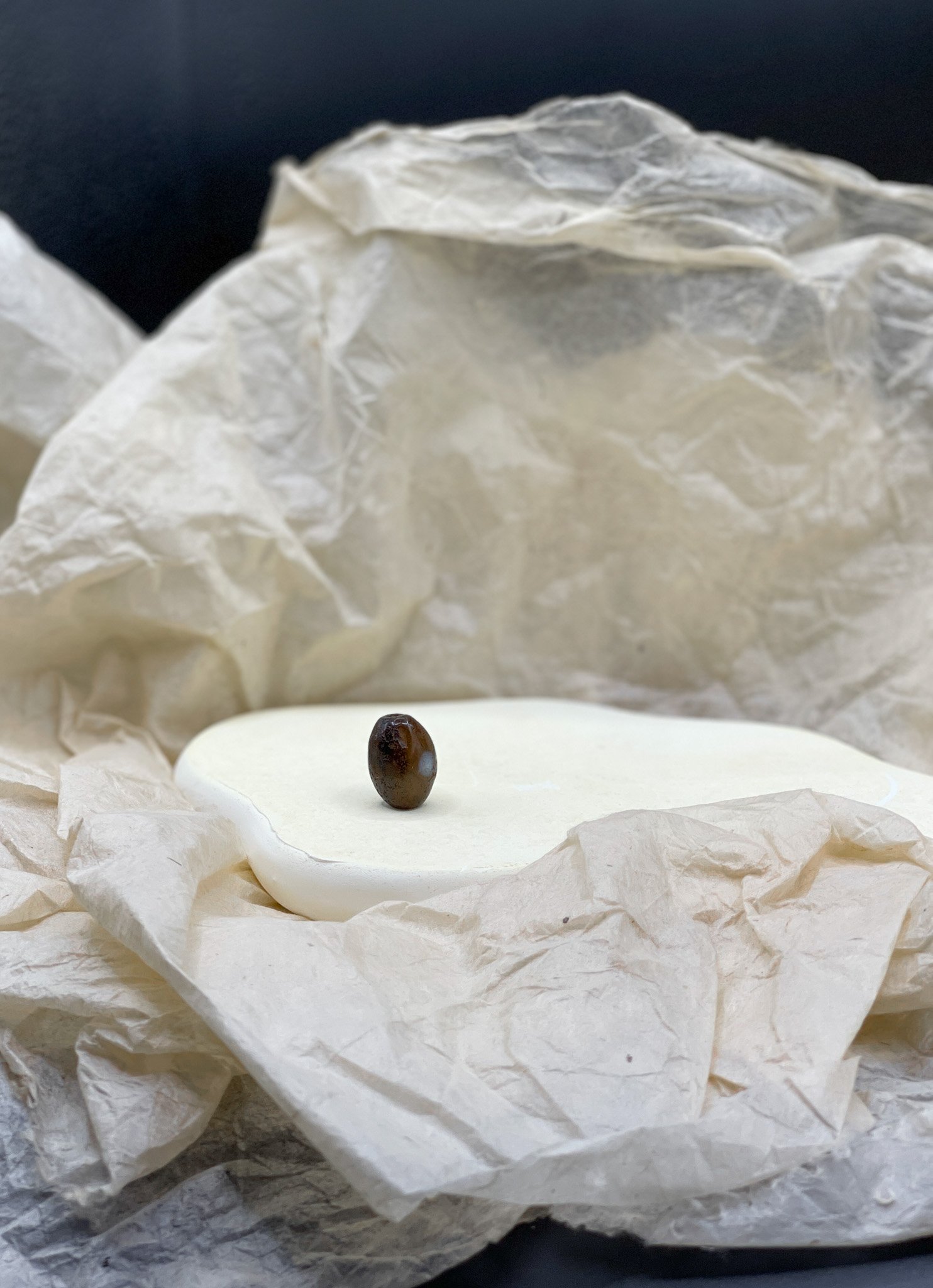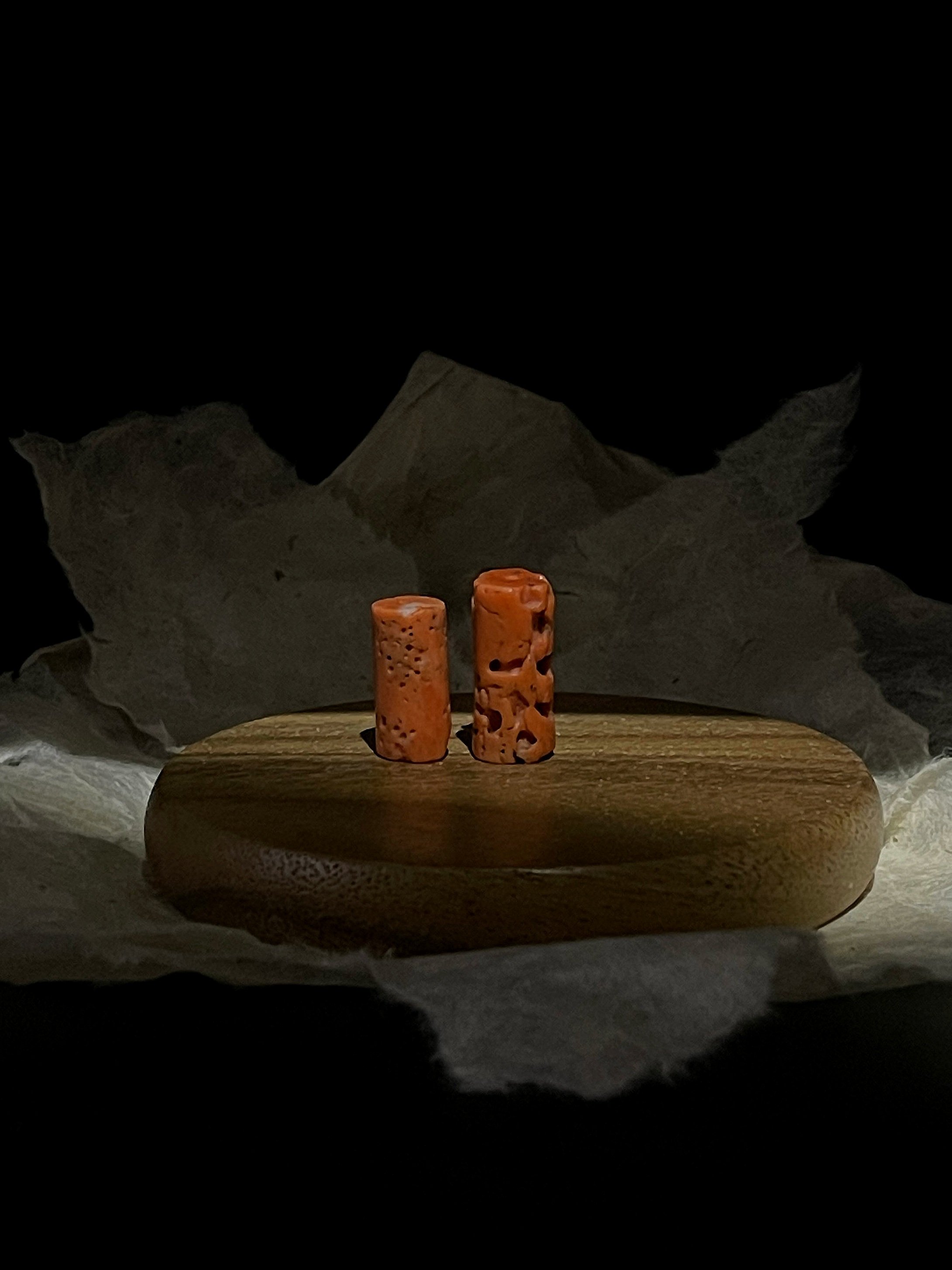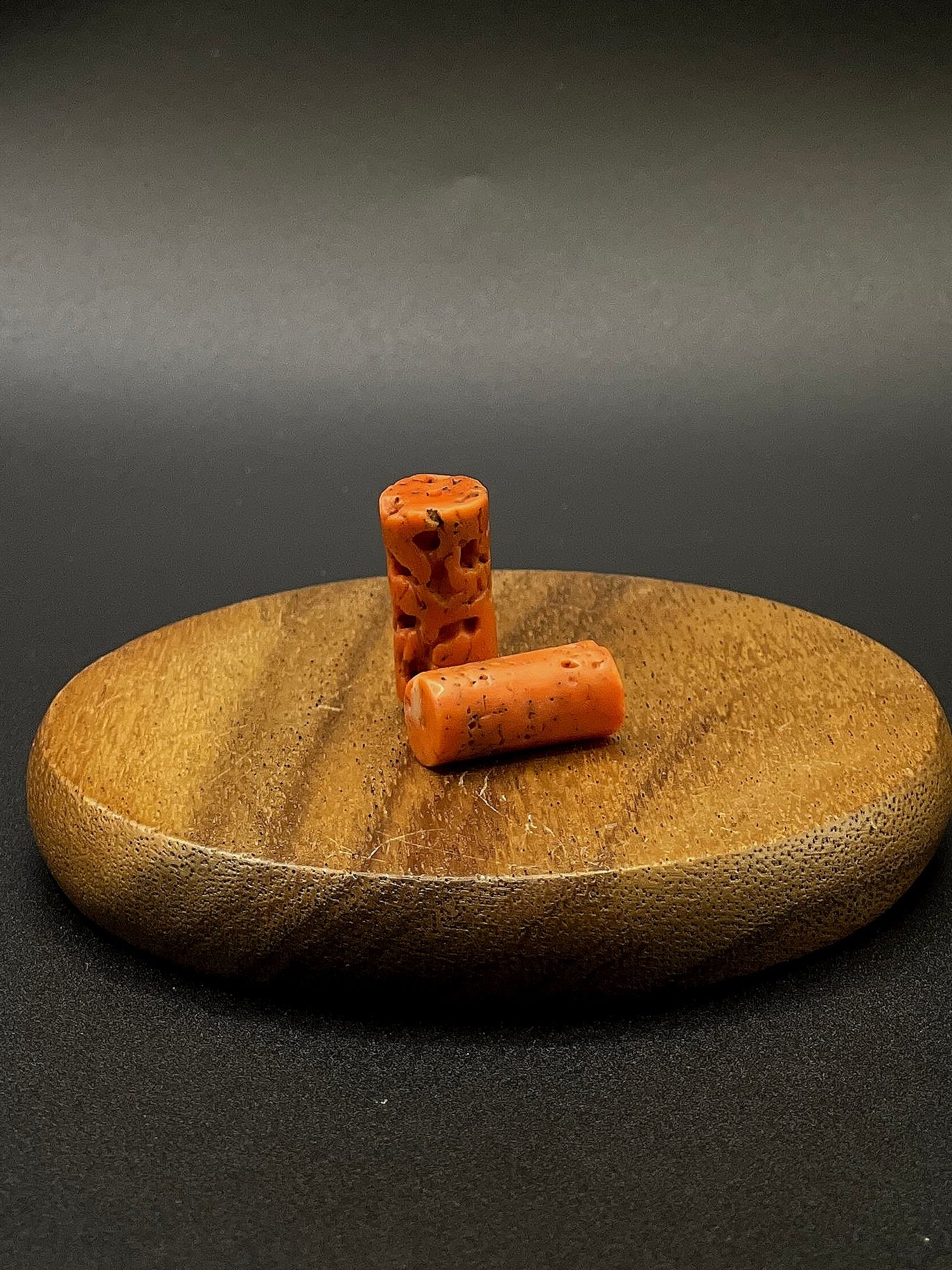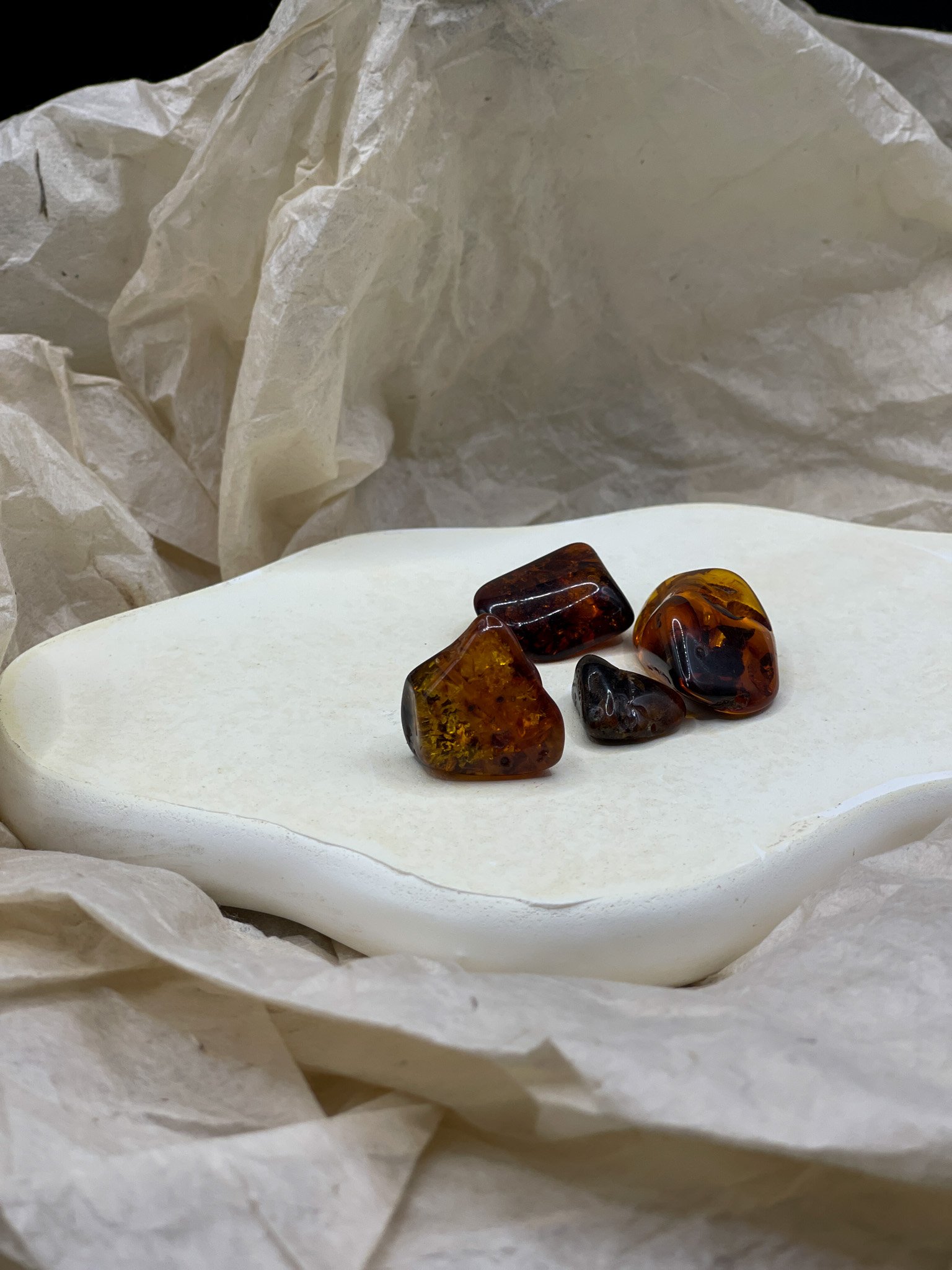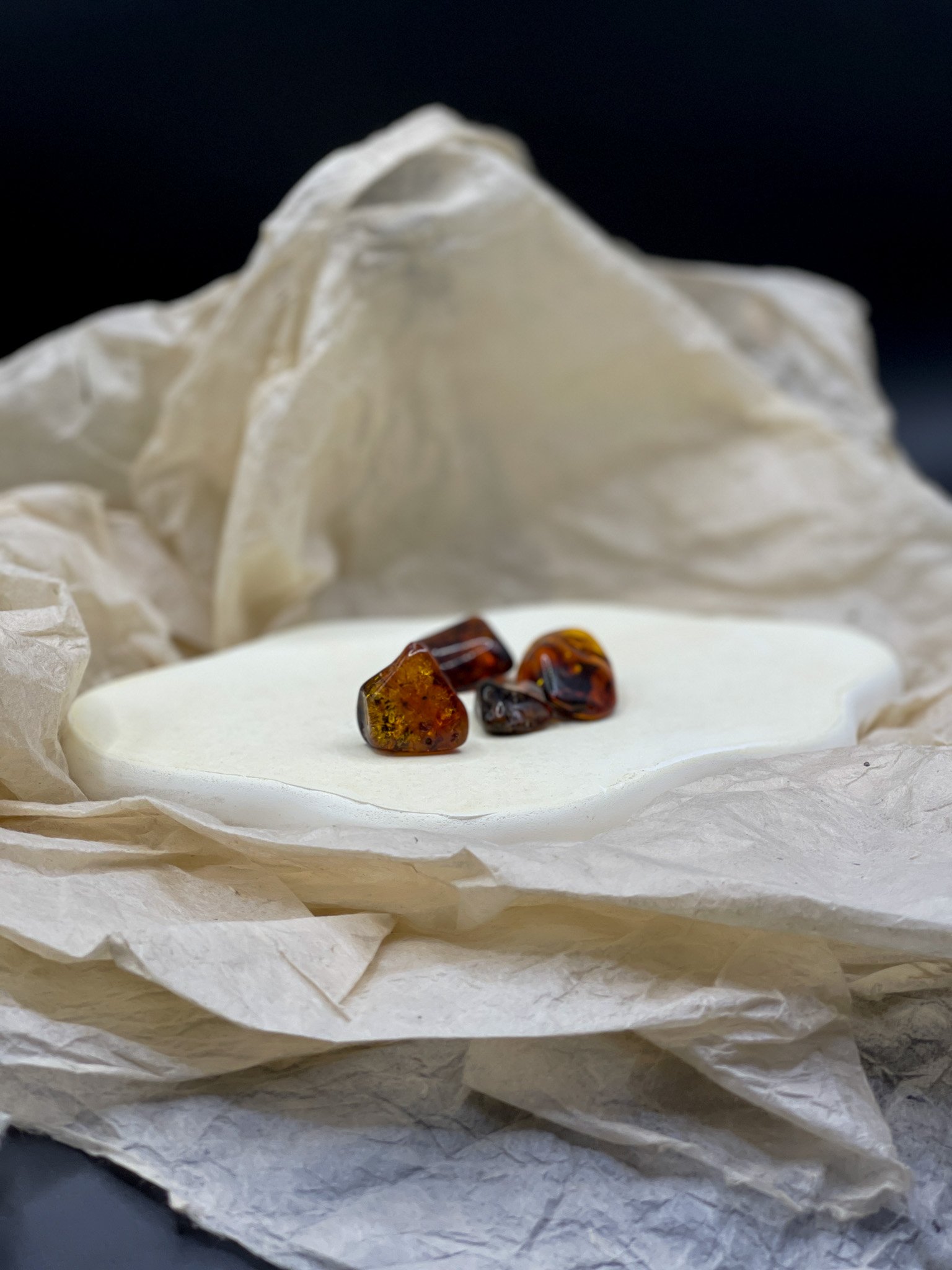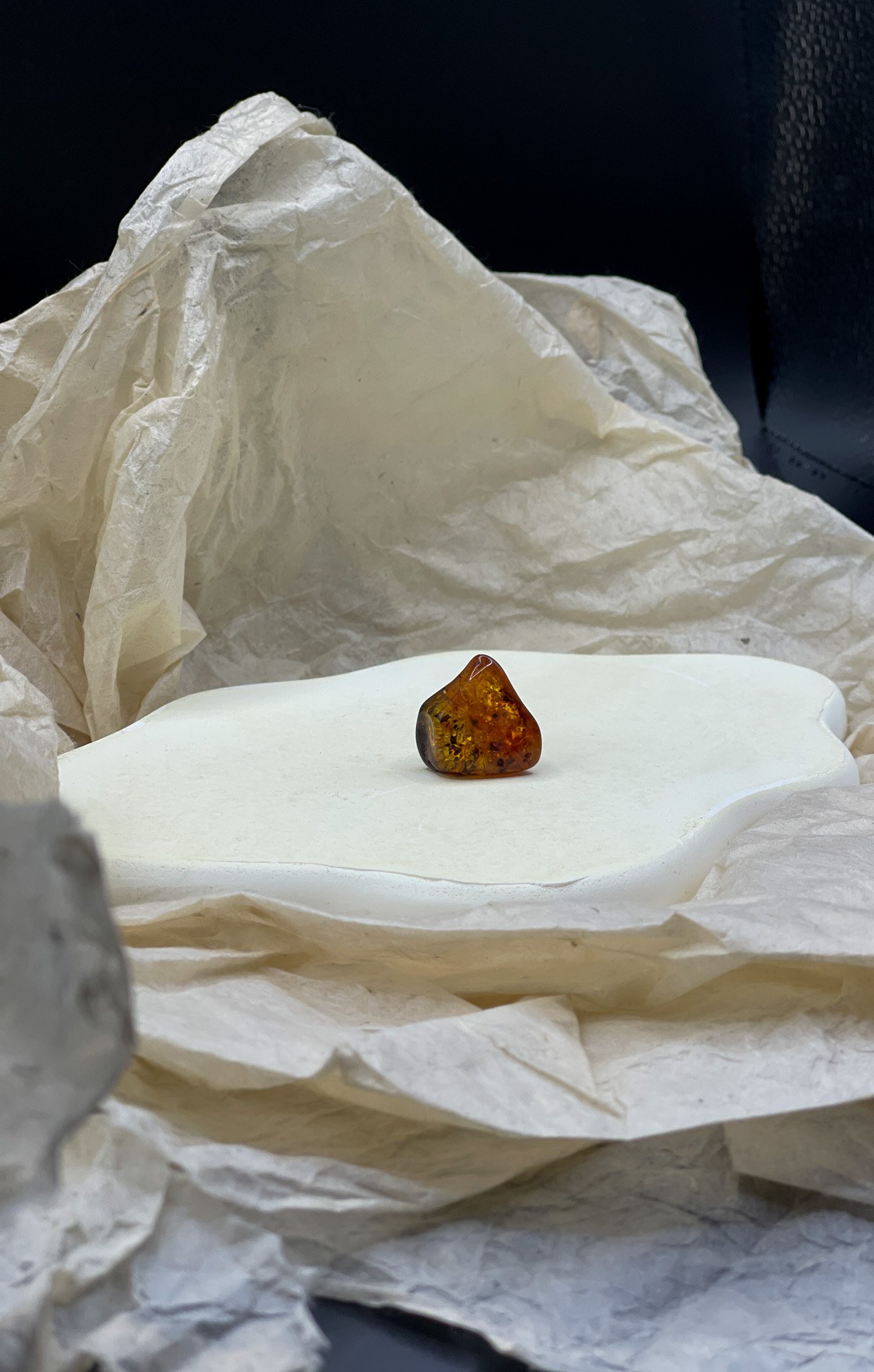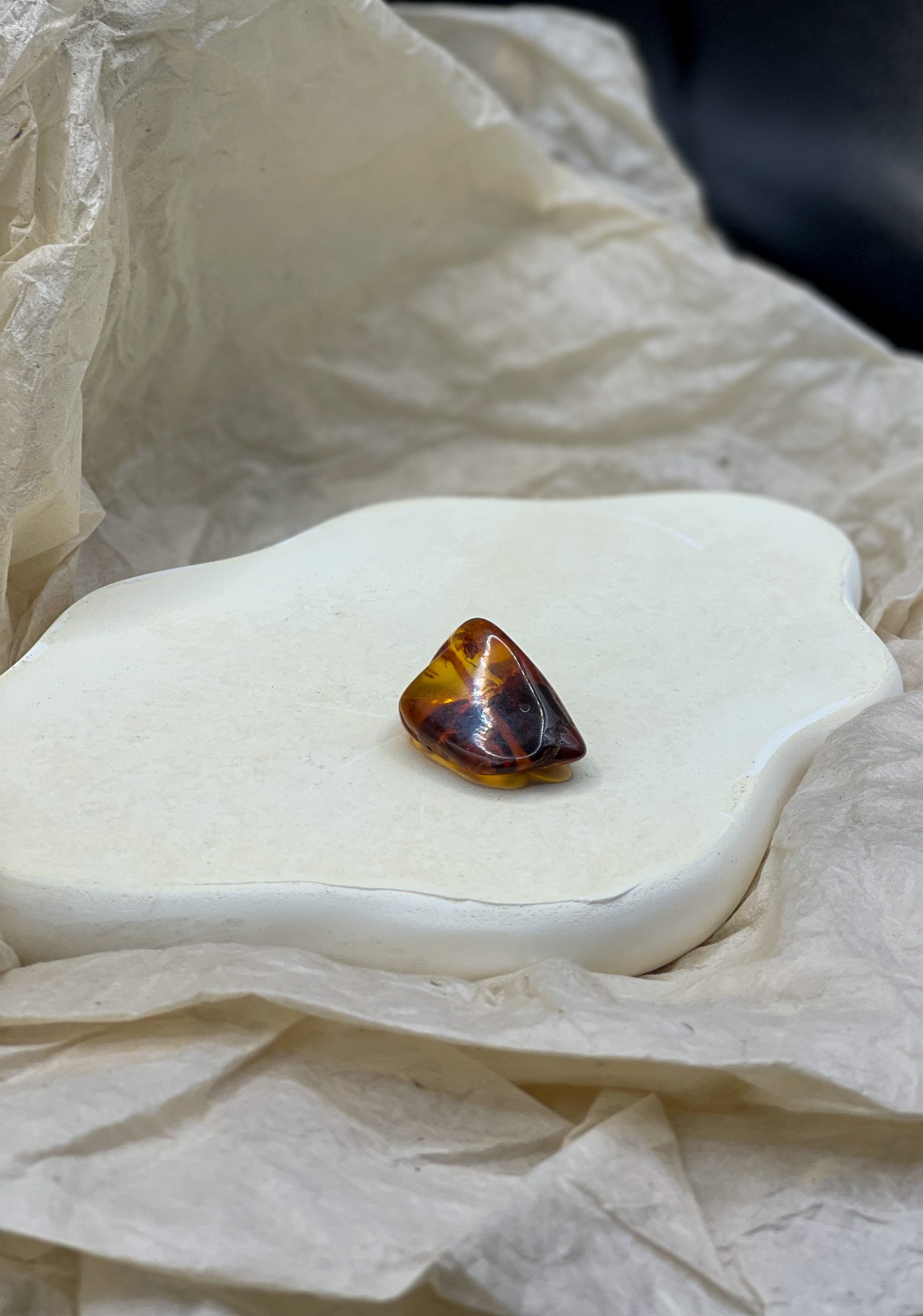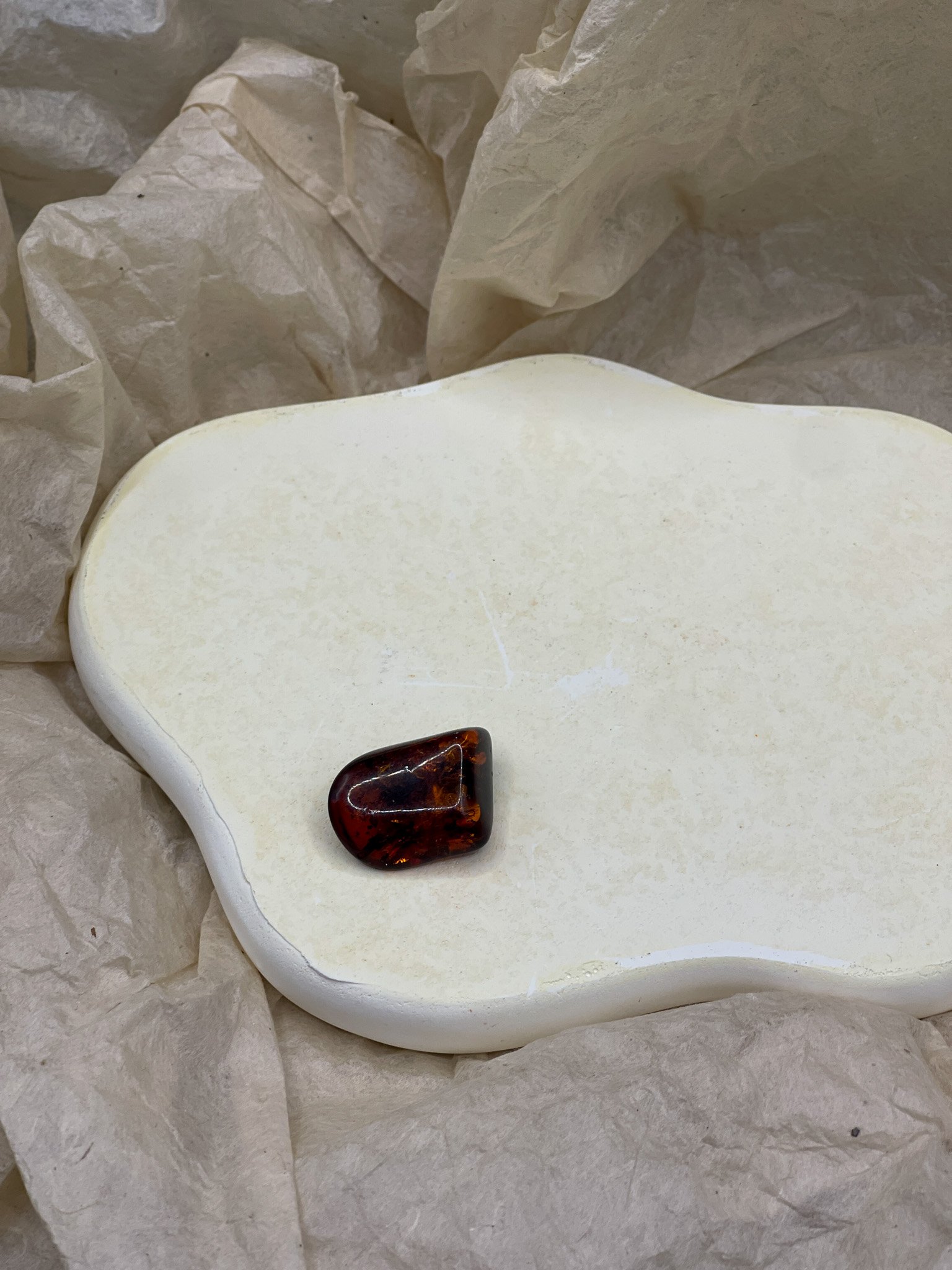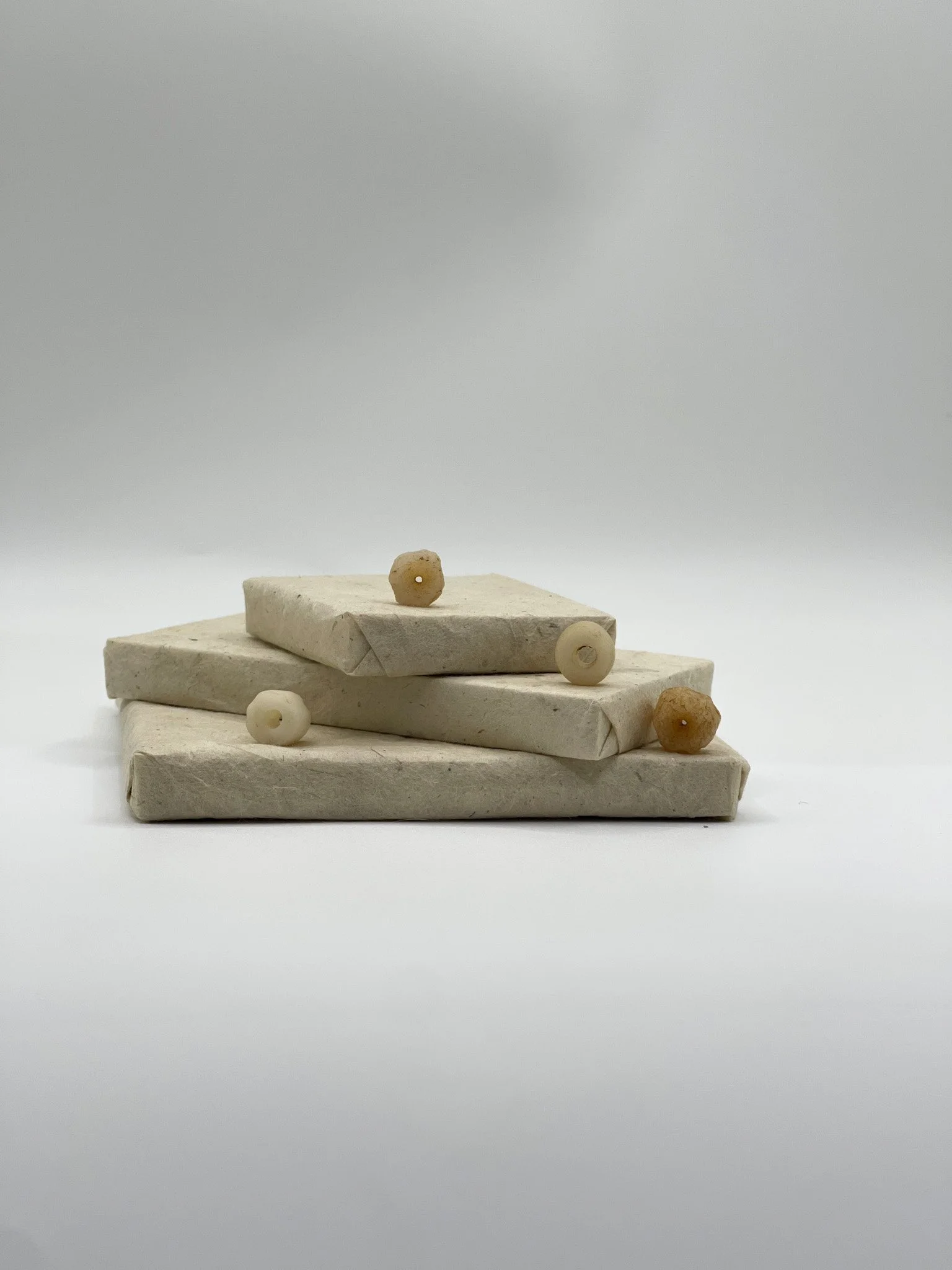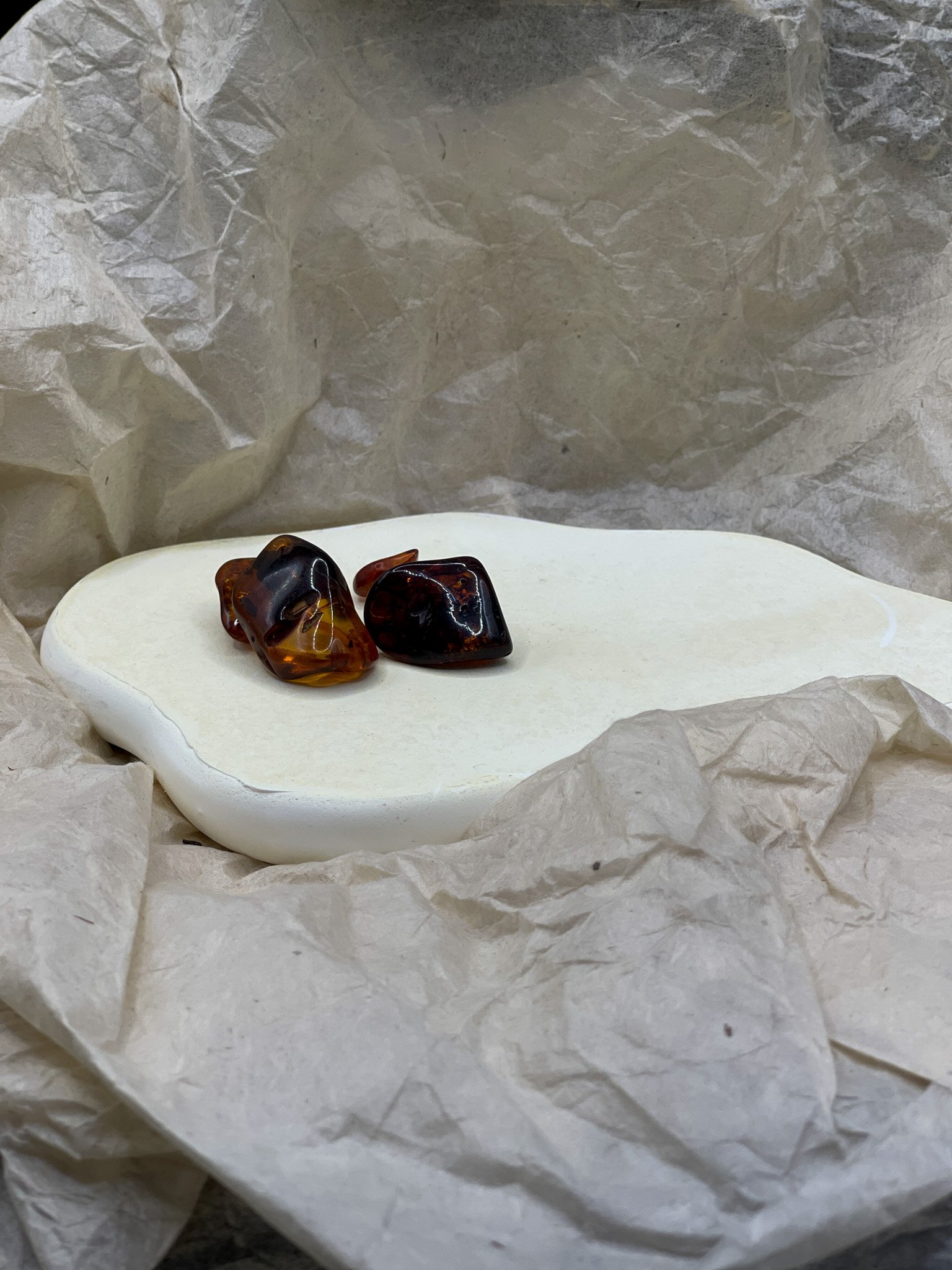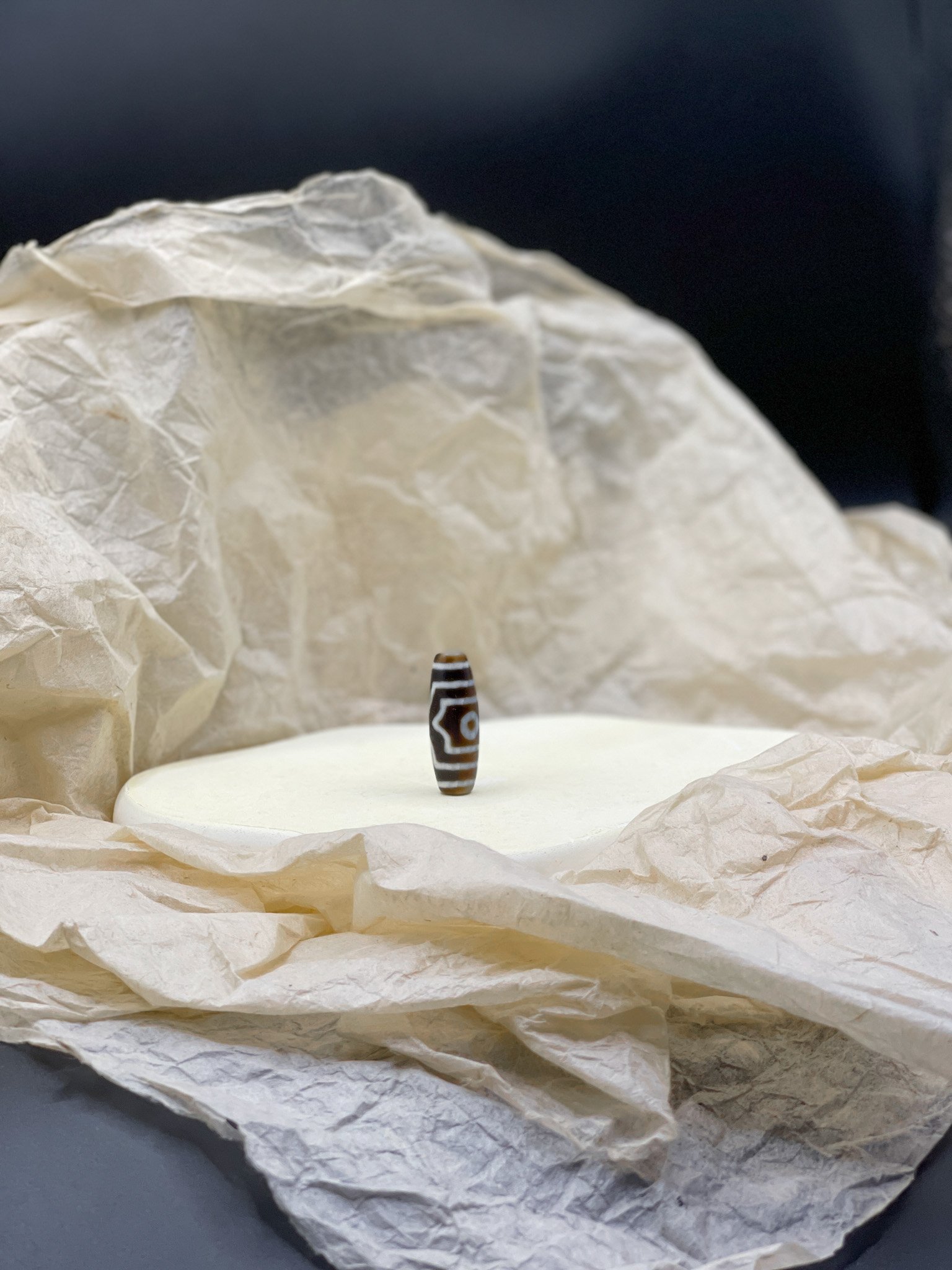 Image 1 of 4
Image 1 of 4

 Image 2 of 4
Image 2 of 4

 Image 3 of 4
Image 3 of 4

 Image 4 of 4
Image 4 of 4





Ancient Dzi Bead
Dzi Agate beads are traditionally worn in Tibetan necklaces for protection and spiritual benefits.
They symbolise good fortune and serve as protective amulets in Tibetan medicine. The designs represent Buddhist symbols, enhancing spiritual energy. They are believed to heal digestive and circulatory issues and promote prosperity and personal growth. Dzi Agate balances yin and yang energies, fostering emotional stability and inner harmony.
Tibetan Dzi beads are ancient stone beads of great cultural and spiritual significance, primarily found in Tibet but also in neighboring regions like India, Nepal, and Bhutan.
These beads are typically made of agate, a type of chalcedony, and are often characterized by their distinctive patterns, such as eyes, stripes, waves, or other geometric designs. The most common patterns feature "eyes," which are circular or oval motifs believed to possess protective and auspicious qualities.
Key Features and Beliefs:
1. **Spiritual Significance**: Dzi beads are highly revered in Tibetan culture and are often considered sacred. They are believed to carry protective, healing, and luck-bringing properties. Many people wear them as amulets or talismans to ward off negative energy, attract good fortune, and promote spiritual well-being.
2. **Historical Origins**: The exact origins of Dzi beads are shrouded in mystery. Some theories suggest they date back thousands of years, possibly to the ancient Zhangzhung civilization or even earlier. Others believe they were brought to Tibet from India or Persia.
3. **Patterns and Symbolism**: The patterns on Dzi beads are thought to have specific meanings. For example:
- **Eyes**: The number of "eyes" on a bead can signify different blessings, such as protection, wisdom, or prosperity.
- **Stripes and Waves**: These patterns may symbolize harmony, balance, or the flow of energy.
4. **Rarity and Value**: Authentic ancient Dzi beads are rare and highly valued, often fetching high prices in the market. Modern replicas are also popular but are considered less spiritually potent.
5. **Cultural Use**: Dzi beads are often incorporated into jewelry, such as necklaces or bracelets, and are worn close to the body to maximize their spiritual benefits. They are also used in rituals and ceremonies.
6. **Healing Properties**: In traditional Tibetan medicine and spiritual practices, Dzi beads are believed to have healing properties, balancing energies within the body and mind.
Dzi Agate beads are traditionally worn in Tibetan necklaces for protection and spiritual benefits.
They symbolise good fortune and serve as protective amulets in Tibetan medicine. The designs represent Buddhist symbols, enhancing spiritual energy. They are believed to heal digestive and circulatory issues and promote prosperity and personal growth. Dzi Agate balances yin and yang energies, fostering emotional stability and inner harmony.
Tibetan Dzi beads are ancient stone beads of great cultural and spiritual significance, primarily found in Tibet but also in neighboring regions like India, Nepal, and Bhutan.
These beads are typically made of agate, a type of chalcedony, and are often characterized by their distinctive patterns, such as eyes, stripes, waves, or other geometric designs. The most common patterns feature "eyes," which are circular or oval motifs believed to possess protective and auspicious qualities.
Key Features and Beliefs:
1. **Spiritual Significance**: Dzi beads are highly revered in Tibetan culture and are often considered sacred. They are believed to carry protective, healing, and luck-bringing properties. Many people wear them as amulets or talismans to ward off negative energy, attract good fortune, and promote spiritual well-being.
2. **Historical Origins**: The exact origins of Dzi beads are shrouded in mystery. Some theories suggest they date back thousands of years, possibly to the ancient Zhangzhung civilization or even earlier. Others believe they were brought to Tibet from India or Persia.
3. **Patterns and Symbolism**: The patterns on Dzi beads are thought to have specific meanings. For example:
- **Eyes**: The number of "eyes" on a bead can signify different blessings, such as protection, wisdom, or prosperity.
- **Stripes and Waves**: These patterns may symbolize harmony, balance, or the flow of energy.
4. **Rarity and Value**: Authentic ancient Dzi beads are rare and highly valued, often fetching high prices in the market. Modern replicas are also popular but are considered less spiritually potent.
5. **Cultural Use**: Dzi beads are often incorporated into jewelry, such as necklaces or bracelets, and are worn close to the body to maximize their spiritual benefits. They are also used in rituals and ceremonies.
6. **Healing Properties**: In traditional Tibetan medicine and spiritual practices, Dzi beads are believed to have healing properties, balancing energies within the body and mind.

